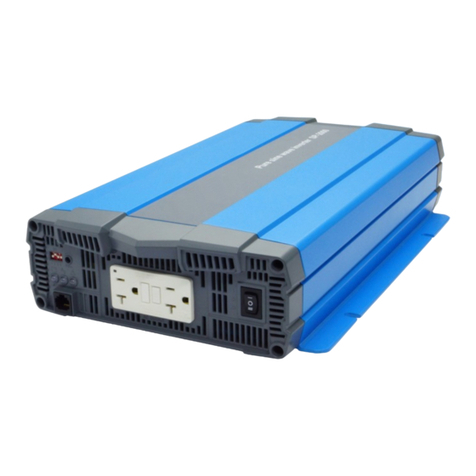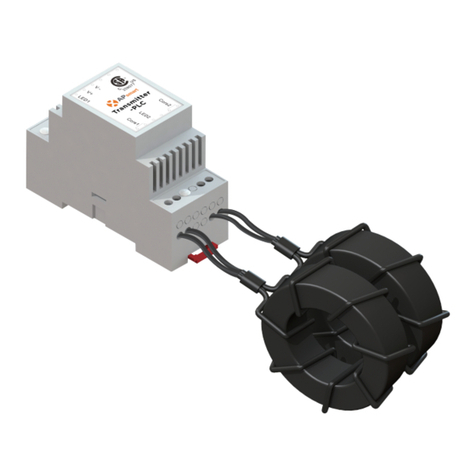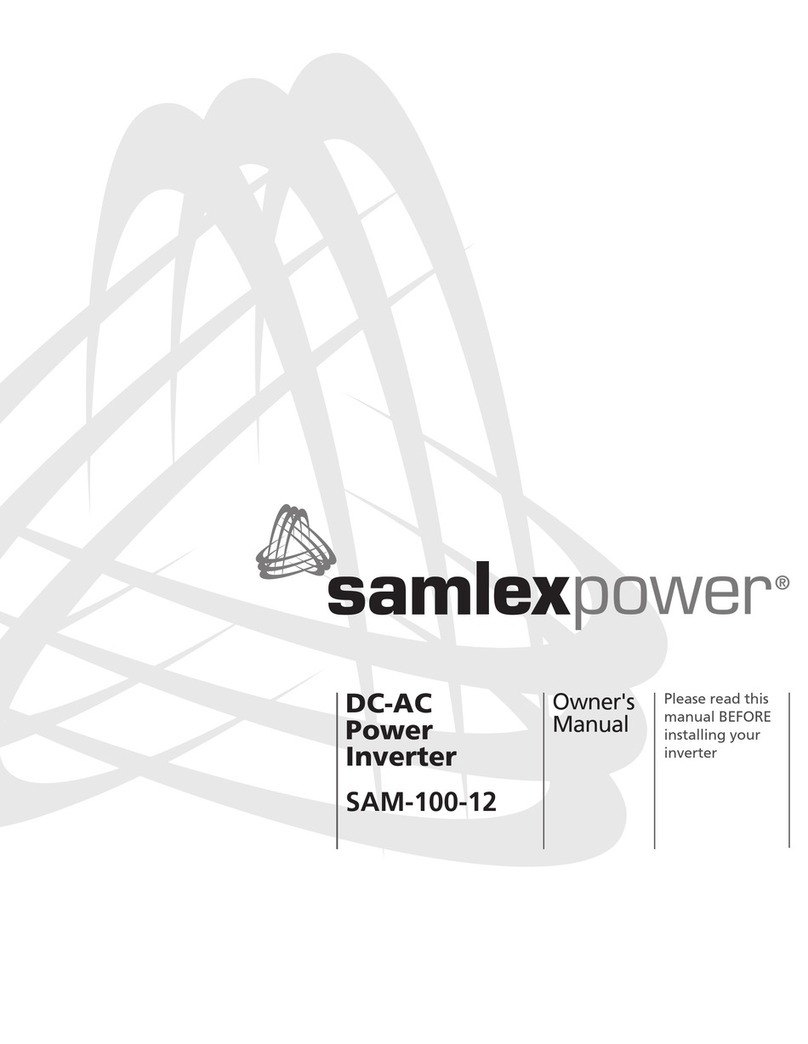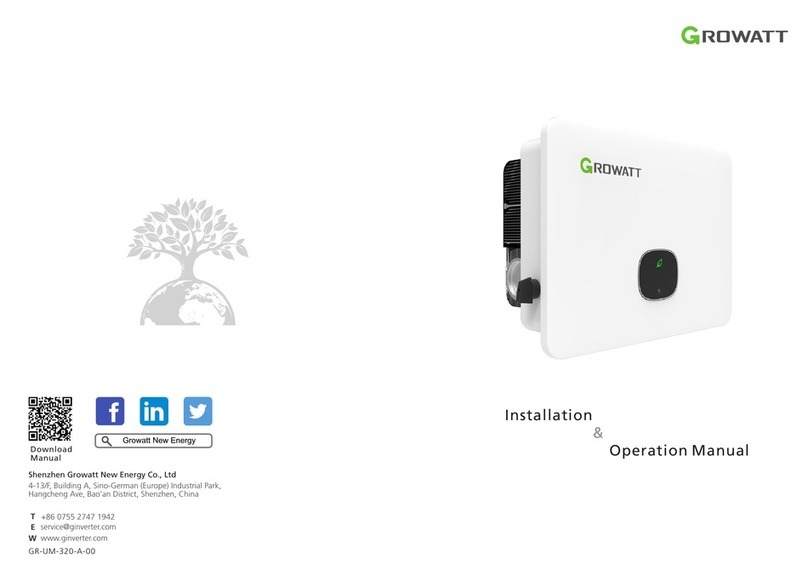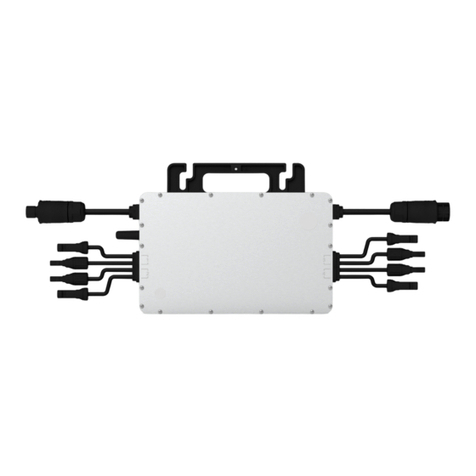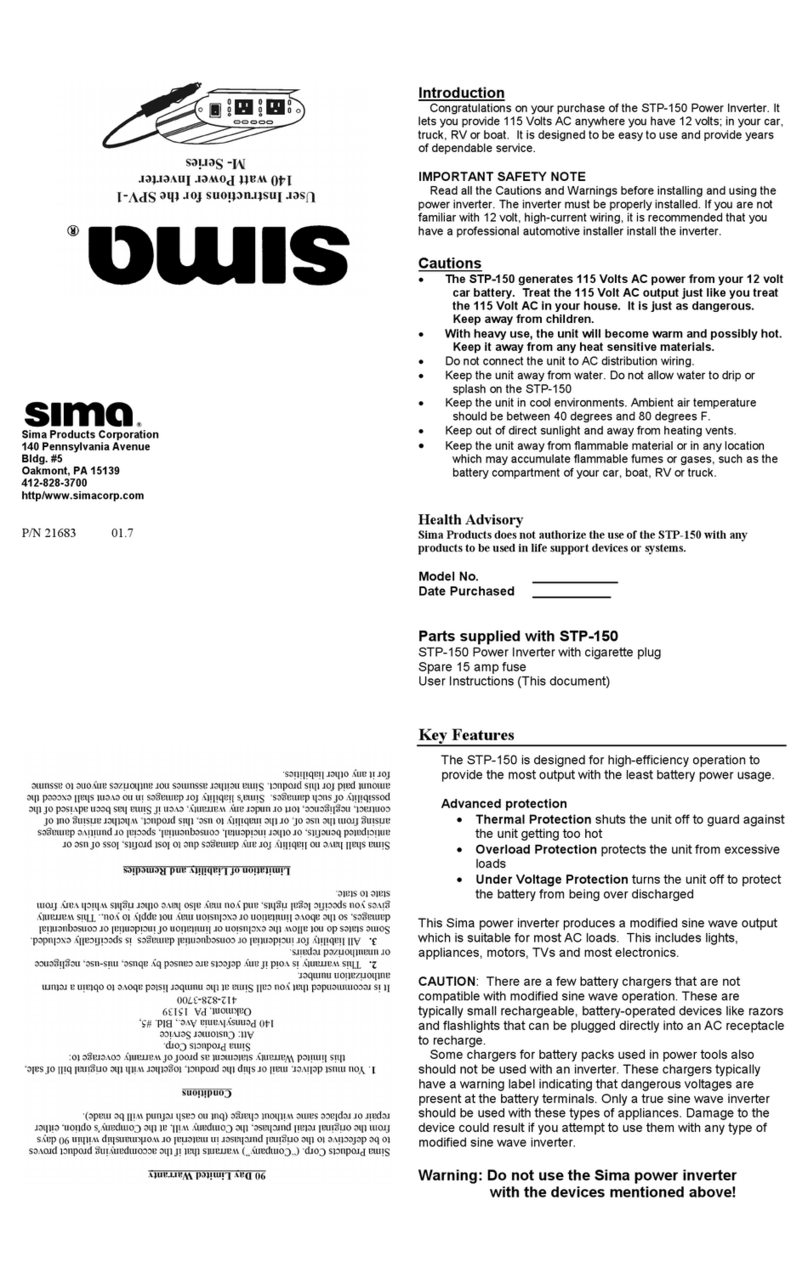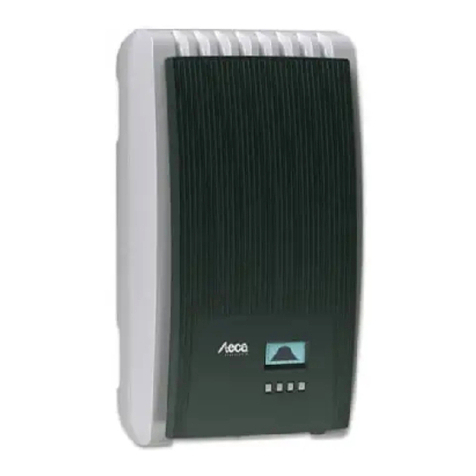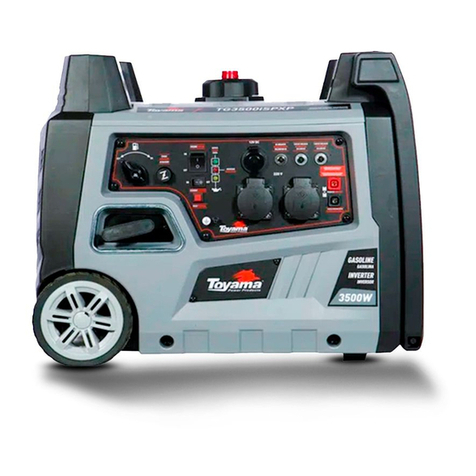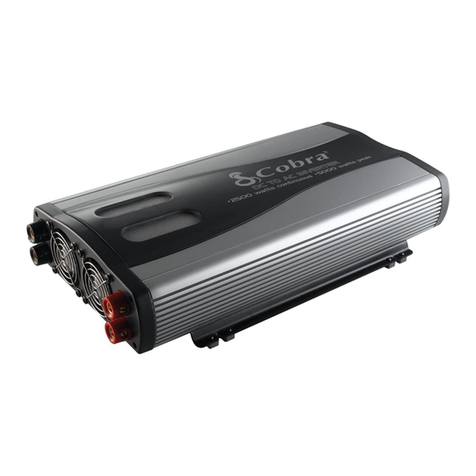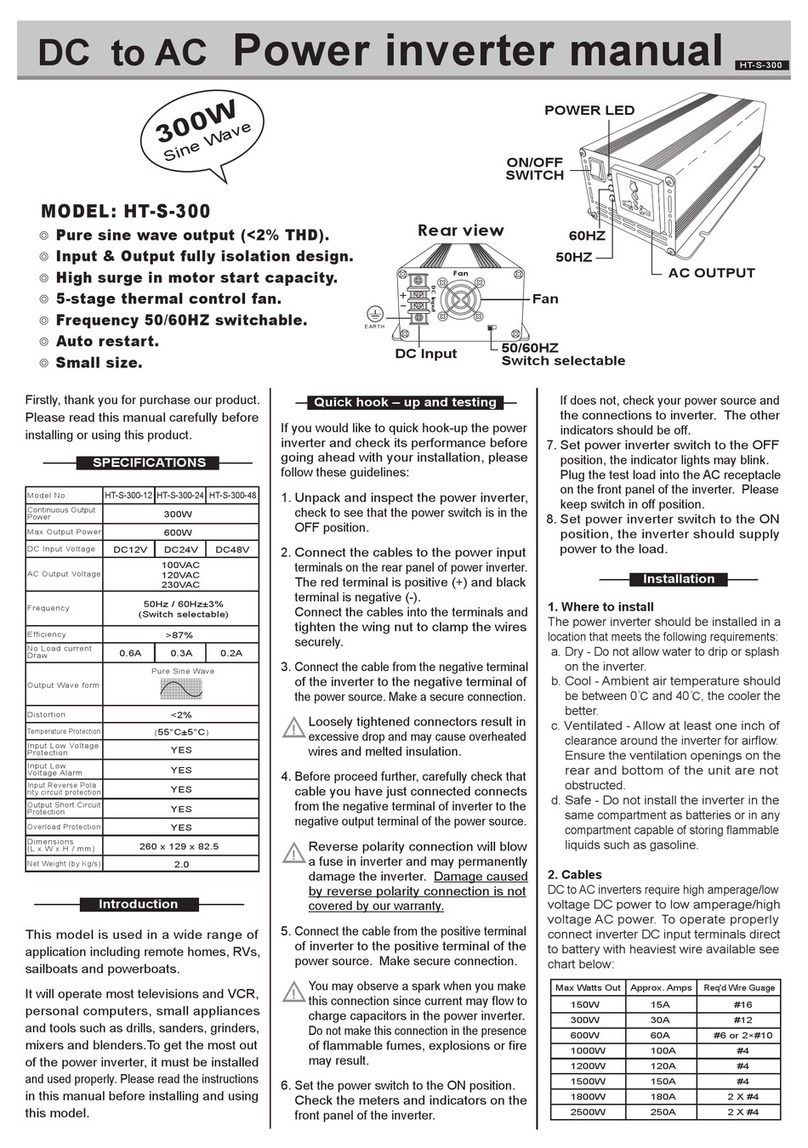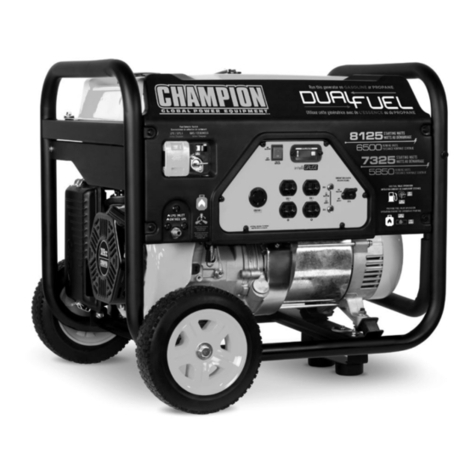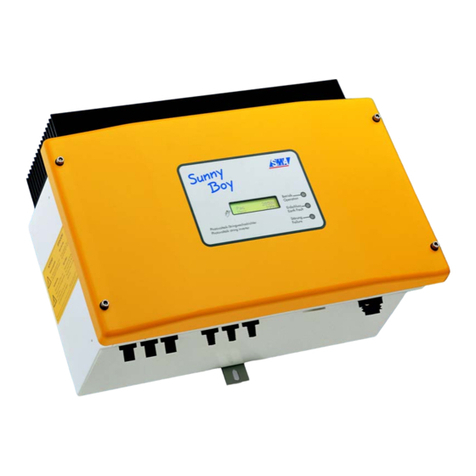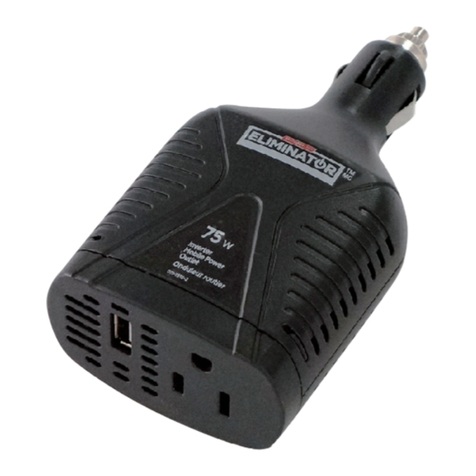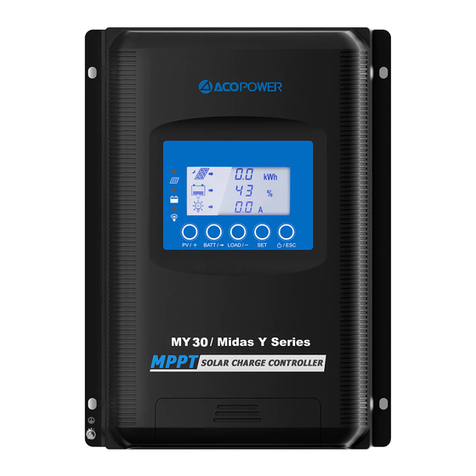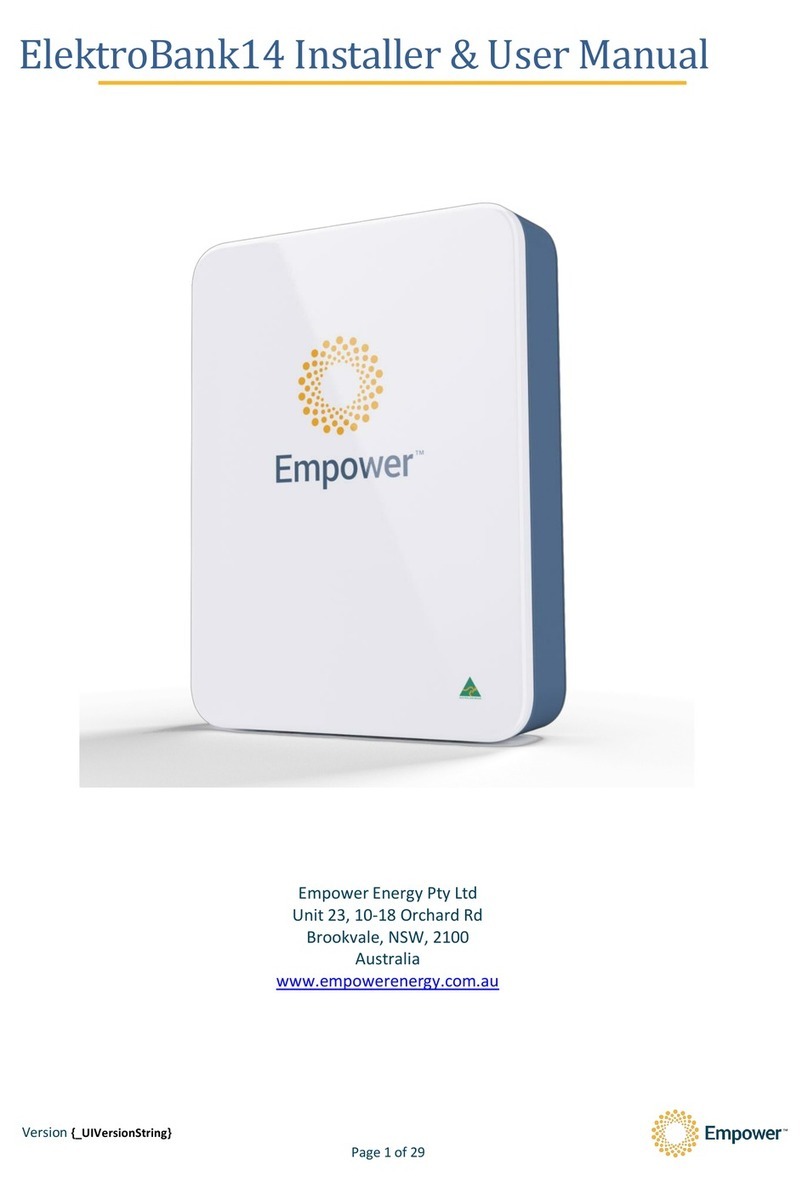KUSSMAUL Auto Power 2000 User manual

This guide for use by qualified personnel only.
Auto Power 2000W & 3000W Inverter/Chargers
Installation Guide
Auto Power 2000W shown.
Model Numbers:
091-269-12-2000
091-269-12-3000
K
170 Cherry Avenue
West Sayville, NY 11796
www.kussmaul.com
Ph: 800-346-0857
Fax: 631-567-5826
File: 091-269-12-XXXX
Rev: A.
Revised By:PSS/JRN
Date: 07-30-2019
2 YEAR WARRANTY


i
This guide for use by qualified personnel only.
Contact Information
VDOHV#NXVVPDXOFRP
#MBOL1BHF
All products of Kussmaul Electronics Company Inc. are warranted to be free of
defects of material or workmanship. Liability is limited to repairing or replacing
at our factory, without charge, any material or defects which become apparent in
normal use within 2 years from the date the equipment was shipped. Equipment
is to be returned, shipping charges prepaid and will be returned, after repair,
shipping charges paid.
Kussmaul Electronics Company, Inc. shall have no liability for damages of any
kind to associated equipment arising from- the installation and/or use of the Kuss
maul Electronics Company, Inc. products. The purchaser, by the acceptance of
the equipment, assumes all liability for any damages which may result from its
installation, use or misuse, by the purchaser, his or its employees or others.
WARRANTY POLICY
DATE INSTALLED _______________________________________________________
INSTALLED BY _________________________________________________________
VEHICLE IDENTIFICATION _______________________________________________
VEHICLE OWNER _______________________________________________________
INSTALLATION RECORD
170 Cherry Avenue
West Sayville, NY 11796
www.kussmaul.com
Ph: 800-346-0857
Fax: 631-567-5826
Exclusion for Documentation
UNLESS SPECIFICALLY AGREED TO IN WRITING, SELLER
(A) MAKES NO WARRANTY AS TO THE ACCURACY, SUFFICIENCY OR SUITABILITY OF ANY
TECHNICAL OR OTHER INFORMATION PROVIDED IN ITS MANUALS OR OTHER DOCUMENTATION;
% ASSUMES NO RESPONSIBILITY OR LIABILITY FOR LOSSES, DAMAGES, COSTS OR EXPENSES,
WHETHER SPECIAL, DIRECT, INDIRECT, CONSEQUENTIAL OR INCIDENTAL, WHICH MIGHT ARISE
OUT OF THE USE OF SUCH INFORMATION. THE USE OF ANY SUCH INFORMATION WILL BE ENTIRELY
AT THE USER’SRISK; AND
& REMINDS YOU THAT IF THIS MANUAL IS IN ANY LANGUAGE OTHER THAN ENGLISH,
ALTHOUGH STEPS HAVE BEEN TAKEN TO MAINTAIN THE ACCURACY OF THE TRANSLATION, THE
ACCURACY CANNOT BE GUARANTEED.
Date and Revision
07-30-19 Rev.A
Product Numbers

ii $Xto Power Inverter Charger Installation Guide
About This Guide
Purpose
The purpose of this Installation Guide is to provide explanations and
procedures for installing the $XWR3RZHUDQG
Scope
The Guide provides safety and installation guidelines as well as information
on tools and wiring. It does not provide details about particular brands of
batteries. You need to consult individual battery manufacturers for this
information.
Audience
The information in this Guide is intended for qualified personnel. Qualified
personnel have training, knowledge, and experience in:
• Installing electrical equipment and PV power systems (up to 1000
volts).
• Applying all applicable installation codes.
• Analyzing and reducing the hazards involved in performing electrical
work.
• Selecting and using Personal Protective Equipment (PPE).

iii
Important Safety Instructions
IMPORTANT: READ AND SAVE THIS INSTALLATION
GUIDE FOR FUTURE REFERENCE.
This chapter contains important safety and installation instructions for the
$XWR3RZHUDQG Inverter/Charger ($3$3). Each
time, before using the$3, READ ALL instructions and
cautionary markings on or provided with the inverter/charger, the batteries,
and all appropriate sections of this guide.
NOTE: The ,QYHUWHU&KDUJHUcontains no user-serviceable parts.
The following special messages may appear throughout this bulletin or on
the equipment to warn of potential hazards or to call attention to
information that clarifies or simplifies a procedure.
The addition of either symbol to a “Danger” or “Warning” safety
label indicates that an electrical hazard exists which will result in
personal injury if the instructions are not followed.
This is the safety alert symbol. It is used to alert you to potential
personal injury hazards. Obey all safety messages that follow this
symbol to avoid possible injury or death.
DANGER indicates an imminently hazardous situation, which, if not
avoided, will result in death or serious injury.
WARNING indicates a potentially hazardous situation, which, if not
avoided, can result in death or serious injury.
CAUTION indicates a potentially hazardous situation, which, if not
avoided, can result in moderate or minor injury.
NOTICE indicates a potentially hazardous situation, which, if not
avoided, can result in equipment damage.
IMPORTANT:
These notes describe things which are important for you
to know, however, they are not as serious as a caution or warning.

iv
Safety Information
ELECTRICAL SHOCK HAZARD
•
•
Do not expose the $3 to rain, snow, spray, or bilge water.
This inverter/charger is designed for marine applications only when
additional drip protection is installed in certain orientations. See
“Mounting Orientations” on page 24 for more information.
Do not operate the inverter/charger if it has received a sharp blow,
been dropped, has cracks or openings in the enclosure including if the
AC terminal cover has been lost, damaged, or will not close, or
otherwise damaged in any other way.
• Do not disassemble the inverter/charger. Internal capacitors remain
charged after all power is disconnected.
• Disconnect both AC and DC power from the inverter/charger before
attempting any maintenance or cleaning or working on any circuits
connected to the inverter/charger. The INVERTER ENABLE button
on the front panel does not function like a power switch that energizes
or de-energizes the unit arbitrarily. When AC and DC power sources
are connected and present, the unit is always energized.
• Do not operate the inverter/charger with damaged or substandard
wiring. Make sure that all wiring is in good condition and is not
undersized.
Failure to follow these instructions will result in death or serious
injury.
FIRE AND BURN HAZARD
• Do not cover or obstruct the air intake vent openings and/or install in
a zero-clearance compartment.
• Do not use transformerless battery chargers in conjunction with the
inverter/charger due to overheating.
Failure to follow these instructions will result in death or serious
injury.
EXPLOSION HAZARD
• Charge only properly rated (such as 12 V) lead-acid (GEL, AGM,
Flooded, or lead-calcium) rechargeable batteries because other
battery types may explode.
• Do not work in the vicinity of lead-acid batteries. Batteries generate
explosive gases during normal operation. See note #1.
• Do not install and/or operate in compartments containing flammable
materials or in locations that require ignition-protected equipment.
See notes #2 and #3.
Failure to follow these instructions will result in death or serious
injury.
Auto Power Inverter Charger Installation Guide

v
This guide for use by qualified personnel only.
NOTES:
Follow these instructions and those published by the battery
manufacturer and the manufacturer of any equipment you intend to use
in the vicinity of the battery. Review cautionary markings on these
products and on the engine.
This inverter/charger contains components which tend to produce arcs
or sparks.
Locations include any space containing gasoline-powered machinery,
fuel tanks, as well as joints, fittings, or other connections between
components of the fuel system.
$XWR3RZHUDQG inverter/charger products are designed for
deep cyclelead-acid batteries only. Charging lithium-ion batteries are
currentlynot supported and doing so is an explosion hazard.
Lithium-ion battery cells are individually monitored for voltage and
temperature. The $XWR3RZHUdoes not support this
individual cellmonitoring on lithium-ion batteries.
Precautions When Working With Batteries
NOTES:
Mount and place the Inverter/Charger unit away frombatteries in a
well ventilated compartment.
Always have someone within range of your voice or close enough to
come to your aid when you work near a lead-acid battery.
Always have plenty of fresh water and soap nearby in case battery acid
contacts skin, clothing, or eyes.
If battery acid contacts skin or clothing, wash immediately with soap
and water. If acid enters your eye, immediately flood it with running
cold water for at least twenty minutes and get medical attention
immediately.
BURN FROM HIGH SHORT-CIRCUIT CURRENT, FIRE
AND EXPLOSION FROM VENTED GASES HAZARDS
• Always wear proper, non-absorbent gloves, complete eye protection,
and clothing protection. Avoid touching your eyes and wiping your
forehead while working near batteries. See note #4.
• Remove all personal metal items, like rings, bracelets, and watches
when working with batteries. See notes #5 and #6 below.
• Never smoke or allow a spark or flame near the engine or batteries.
• Never charge a frozen battery.
Failure to follow these instructions can result in death or serious
injury.

vi $XWR3RZHU,QYHUWHU&KDUJHUInstallation Guide
5.
6.
7.
Use extra caution to reduce the risk or dropping a metal tool on the
battery. It could spark or short circuit the battery or other electrical
parts and could cause an explosion.
%DWWHULHVFDQSURGXFHDVKRUWFLUFXLWFXUUHQWKLJKHQRXJKWRZHOGDULQJRU
PHWDOEUDFHOHWRUWKHOLNHWRWKHEDWWHU\WHUPLQDOFDXVLQJDVHYHUHEXUQ
:KHQUHPRYLQJDEDWWHU\DOZD\VUHPRYHWKHQHJDWLYHWHUPLQDOIURPWKH
EDWWHU\ILUVWIRUV\VWHPVZLWKJURXQGHGQHJDWLYH,ILWLVJURXQGHGSRVLWLYH
UHPRYHWKHSRVLWLYHWHUPLQDOILUVW0DNHVXUHDOOORDGVFRQQHFWHGWRWKH
EDWWHU\DQGDOODFFHVVRULHVDUHRIIVR\RXGRQ¶WFDXVHDQDUF
Precautions When Preparing to Charge
NOTES:
• Study and follow all of the battery manufacturer's specific precautions, such
as removing or not removing cell caps while charging, whether equalization
is acceptable for your battery, and recommended rates of charge.
•For flooded non-sealed batteries, add distilled water in each cell until
battery acid reaches the level specified by the battery manufacturer.
This helps to purge excessive gas from cells. Do not overfill. For a
battery without removable cell caps, carefully follow manufacturer's
instructions.
Precautions When Placing the Inverter/Charger
EXPOSURE TO CHEMICALS AND GASES HAZARD
•Make sure the area around the battery is well ventilated.
•Make sure the voltage of the batteries matches the output voltage of
the inverter/charger.
• Be careful to keep corrosion from coming into contact with your eyes
and skin when cleaning battery terminals.
Failure to follow these instructions can result in death or serious
injury.
RISK OF DAMAGE TO THE INVERTER/CHARGER
• Never allow battery acid to drip on the inverter/charger when reading
gravity, or filling battery.
•Never place the Inverter/Charger unit directly abovebatteries; gases
from a battery will corrode and damage the inverter/charger.
•Do not place a battery on top of the inverter/charger.
Failure to follow these instructions can damage the unit and/or
damage other equipment.

vii
This guide for use by qualified personnel only.
Regulatory
The $XWR3RZHUInverter/Charger is certified to appropriate US
and Canadian standards. For more information see “Regulatory
Approvals” on the Specifications section in the Owner’s Guide.
The Inverter/Charger is intended to be used for mobile or commercial
applications. This inverter/charger is designed for marine applications only
when additional drip protection is installed in certain orientations.
It is not intended for other applications as it may not comply with the
additional safety code requirements needed for those other applications.
See “Limitations On Use” below.
FCC Information to the User
This equipment has been tested and found to comply with the limits for a
Class B digital device, pursuant to part 15 of the FCC Rules. These limits
are designed to provide reasonable protection against harmful interference
in a residential installation. This equipment generates, uses, and can radiate
radio frequency energy and, if not installed and used in accordance with the
instructions, may cause harmful interference to radio communications.
However, there is no guarantee that interference will not occur in a
particular installation. If this equipment does cause harmful interference to
radio or television reception, which can be determined by turning the
equipment off and on, the user is encouraged to try to correct the
interference by one or more of the following measures:
• Reorient or relocate the receiving antenna.
• Increase the separation between the equipment and receiver.
• Connect the equipment into an outlet on a circuit different from that to
which the receiver is connected.
• Consult the dealer or an experienced radio/TV technician for help.
LIMITATIONS ON USE
Do not use in connection with life support systems or other medical
equipment or devices.
Failure to follow these instructions can result in death or serious
injury.
Unauthorized changes or modifications to the equipment could void the
user’s authority to operate the equipment.

viii
End of Life Disposal
The $XWR3RZHU is designed with environmental awareness and
sustainability in mind. At the end of its useful life, the ,QYHUWHU&KDUJHU
can be decommissioned and disassembled. Components which can be
recycled must be recycled and those that cannot be recycled must be
disposed of according to local, regional, or national environmental
regulations.
Many of the electrical components used in the $XWR3RZHUare made of
recyclable material like steel, copper, aluminum, and other alloys. These
materials can be auctioned off to traditional scrap metal recycling
companies who resell reusable scraps.
Electronic equipment such as the circuit boards, connectors, and fuses can
be broken down and recycled by specialized recycling companies whose
goal is to avoid having these components end up in the landfill.
For more information on disposal, contact .XVVPDXO(OHFWURQLFV

This guide for use by qualified personnel only.
Important Safety Instructions
. . . . . . . . . . .. . . . . . . . . . . . . . . . . . . . .. . . . . . . . . . . . .. . . .. . . . . . . . . .. . ... . . . . ... . . . . . . . . .. . . . iii
Introduction. . . . . . . . . . . . . . . . . . . . . . . . . . . . . . . . . . . . . . . . . . .. . . . . . . . . . . . . . . . . . . . . . . . . . . . . . . . . . . . . . . . . . . . .. . .. . . . . . . . .1
Materials List . . . . . . . . . . . . . . . . .. . . . . . .. . . . . . . . . .. . . . . . . . . . . . . . . . . . . . .. . . . . . . . . . . . . . . . .. . . . . . . . . .. . . .. . . . .2
Installation Information. . . . . . . . . . . . . . . . .. . . . . . . . . . . . . .. . . . . . . . . . . . . . . . .. . . . . . . . . . . . . . . . . . . . . . . . . . . . . . . . . . . . . .. . .. .3
Before You Begin the Installation . . . . . . . . . . . . . . .. . . . . . .. . .. . . . . . . . . .. . . .. . .. . . . . . . . . . . . . .. . . . . . .. . . . . . . . . .. .3
Installation Codes . . . . . . . . . . . . . . . . . . . . . . . . . . . .. . . . . . . . . . . . . . . . . . . . . . . .. . . . . . . . . .. . ... . .. . . . . . . . . .. . . . . . . . .3
About the anbus System. . . . . . . . . . . . . . . . . . . . . . . . . . . . . . . . . . . . . . . . . . . . . . . . . . . . . . . . . . . . . . . . . . . . . . . . . . . . . . . . . . . . . . . . .4
anbus System . . . . . . . . . . . . . . . . . . . . . . . . . . . . . . . . . . . . . . . . . . . . . . . . . . . . . . . . . . . . . . . . . . . . . . . . . . . . . . . . . . . . . . . . . .4
Planning the Installation . . . . . . . . . . . . . . . . . . . . . . . . . . . . . . . . . . . . .. . . . . . . . . .. . . . . . . . . . . . . . . . . . . . . . . .. . . . . . .. . .. . . .. . . . .5
Two Key Performance Factors . . . . . . . . . . . . . . . . . . . . . . . . . . . . . . . . . . . . . . . . .. . .. . . .. . . . . . . . . . . . . . . . .. . .. . . . . . . . .5
Size and Length of DC Cables . . . . . . . . . . . . . . . . .. . . . . . . . . . . . . .. . . . . . . . . .. . . .. . . . . . . . . . . . . . . . .. . .. . . . . . .. .5
Planning Preparations . . . . . . . . . . . . . . . . . . . . . . . . . . . . . . . .. . .. . . . . . . . . . . . . .. . . . . . . . . . . . . . . . . . . . . . . .. . . . . . . . . . . . . . . . . . .6
AC, DC, and Network Components . . . . . . . . . . . . . . . .. . . . . . . . . . . . . . . . . . . . .. . .. . . .. . . . . . . . . . . . . . . . .. . .. . . . . . .. .6
AC Components . . . . . . . . . . . . . . . . . . . . . . . . .. . . . . . . . . . . . . .. . . . . . . . . . . . . .. . . . . . . . . . . . . . . . . . . . . . . .. . . . . . .. . . .10
AC Input for Single AC Line Models . . . . . . . . . . . . . . . .. . . . . . . . . . . . . . . . . . . .. . . .. . . . . . . . . . . . . . . . . . . .. . . .. . . .10
AC Input for Dual AC Line Models . . . . . .. . . . . . . . . . . . . . . . . . . . .. . . . . . . . . .. . . .. . . . . . . . . . . . . . . . . . . .. . . .. . . .10
AC Output . . . . . .. . . . . . . . . . . . . . . . . . . . . . . . . . . . . . . . . .. . . . . . . . . . . . . . . . .. . . .. . . . . . . . . . . . . . . . . . . . . . . . . . . .10
AC Loads . .. . . . . . . . . . . . . . . . . . . . . . . . . . . . . . . . . . . . . .. . . . . . . . . . . . . . . . .. . . .. . . . . . . . . . . . . . . . . . . . . . . . . . . .11
AC Disconnect and Over-Current Protection Device . . . .. . . . . . . . . . . . . . . . . . . .. . . . . . . . . . . . . . . . . . . . .. . . . . . . . . . .11
Contents
AC Wiring . . . . . . . . . . . . . . . . . . . . . . . . . . . . . . . . . . . . . . . . . . . . . . . . . . . . . . . .. . . . . . . . . ... . .. . . . . . . . . . . . . . . . . .13
AC Output Neutral Bonding . . . . . . . . . . . . . . . . . . . . . . . . . . . . . . . . . . . .. . . . . . .. . . .. . .. . . . . . . . . . . . . . . . . . . . .. . . .14
Mounting Location . . . . . . . . . . . . . . . . . . . . . . . . . . . . . . . . . . . . . . . . . . . . . . . . . . . . . . . . . . . . . . . . . .. . .. . . . . . . . . . . . . ..5

DC Components . . . . . . . . . . . . . . . . . . . . . . . . . . . . . . . . . . . . . . . . . . . . . . . . . . . . . . . . . . . . . . . . . . . . . . . . . . . . . . . . . . . . . . . .1
Batteries . . . . . . . . . . . . . . . . . . . . . . . . . . . . . . . . . . . . . . . . . . . . . . . . . . . . . . . . . . . . . . . . . . . . . . . . . . . . . . . . . . . . . . . . . .1
DC Cabling . . . . . . . . . . . . . . . . . . . . . . . . . . . . . . . . . . . . . . . . . . . . . . . . . . . . . . . . . . . . . . . . . . . . . . . . . . . . . . . . . . . . . . . .1
DC Disconnects and Over-Current Devices . . . . . . . . . . . . . . . . . . . . . . . . . . . . . . . . . . . . . . . . . . . . . . . . . . . . . . . . . . . . . . .1
Unpacking and Inspecting theInverter/Charger . . . . . .. . . . . . . . . . . . . . . . . . . . . . . . . . . . . . . . . . . . . . . . . . . . . .18
Installation Tools and Materials . . . . . . . . . . . . . . . . . . . . . . . . . . . . . . . . . . . . . . . . . . . . . . . . . . . . . . . . . . . . . . . . . . . . . . . . . . . .19
Tools . . . . . . . . . . . . . . . . . . . . . . . . . . . . . . . . . . . . . . . . . . . . . . . . . . . . . . . . . . . . . . . . . . . . . . . . . . . . . . . . . . . . . . . . . . . . .19
Materials . . . . . . . . . . . . . . . . . . . . . . . . . . . . . . . . . . . . . . . . . . . . . . . . . . . . . . . . . . . . . . . . . . . . . . . . . . . . . . . . . . . . . . . . . .19
Installing the Inverter/Charger . . . . . . . . . . . . . . . . . . . . . . . . . . . . . . . . . . . . . . . . . . . . . . . . . . . . . . . . . . . . . . . . . . . . . . . . . . . . . . . . . . . .20
Overview . . . . . . . . . . . . . . . . . . . . . . . . . . . . . . . . . . . . . . . . . . . . . . . . . . . . . . . . . . . . . . . . . . . . . . . . . . . . . . . . . . . . . . . . . . . . .20
Step 1: Choosing a Location for the Inverter/Charger . . . . . . . . . . . . . . . . . . . . . . . . . . . . . . . . . . . . . . . . . . . . . . . . . . . . . . . . . . .21
Step 2: Mounting the Inverter/Charger . . . . . . . . . . . . . . . . . . . . . . . . . . . . . . . . . . . . . . . . . . . . . . . . . . . . . . . . . . . . . . . . . . . . . .23
Considerations . . . . . . . . . . . . . . . . . . . . . . . . . . . . . . . . . . . . . . . . . . . . . . . . . . . . . . . . . . . . . . . . . . . . . . . . . . . . . . . . . . . . .23
Step 3: Connecting the AC Input and AC Output Wires . . . . . . . . . . . . . . . . . . . . . . . . . . . . . . . . . . . . . . . . . . . . . . . . . . . . . . . . .27
General AC Wiring Considerations . . . . . . . . . . . . . . . . . . . . . . . . . . . . . . . . . . . . . . . . . . . . . . . . . . . . . . . . . . . . . . . . . . . . .27
Connecting AC Input Wires . . . . . . . . . . . . . . . . . . . . . . . . . . . . . . . . . . . . . . . . . . . . . . . . . . . . . . . . . . . . . . . . . . . . . . . . . . .28
Connecting the AC Output Wires . . . . . . . . . . . . . . . . . . . . . . . . . . . . . . . . . . . . . . . . . . . . . . . . . . . . . . . . . . . . . . . . . . . . . . .30
Step 4: Connecting the DCCables . . . . . . . . . . . . . . . . . . . . . . . . . . . . . . . . . . . . . . . . . . . . . . . . . . . . . . . . . . . . . . . . . . . . . . . . . .3
DC Connection Precautions . . . . . . . . . . . . . . . . . . . . . . . . . . . . . . . . .. . .. . .. . . . . . . . . . . . . . . . . . . . . . . . . . . . . . . . . . . .3
Recommended Cable Sizes and Lengths and Fuse Size . . . . . . . . . . . . . . . . . . . . . . . . . . . . . . . . . . . . . . . . . . . . .. ... . . . . .3
Preparing the Cables . . . . . . . . . . . . . . . . . . . . . . . .. . . . . . .. . .. . . .. . .. . . . .. . .. . . . . . . . . . . . .. . .. . . .. . .. . . . .. . . .3
Guidelines for Routing the DC Cables . . . . . . . . . . . . . . . . . . . . . . . . . . . . . . . . . . . . . . . . . . . . . . . . . . . . . . . . . . . . . . . . . . .32
Connecting the DC Cables to the Inverter/Charger . . . .. . .. . .. ... . . .. ... .. . ... . . . . . . . . . . .. . . . . . .. . .. . . . . . .. .3
DC Grounding . . . . . . . . . . . . . . . . . . . . . . . . . .. . .. . . .. . .. . .. . . . . . . . . .. . .. . . . . . . . . . . . . . . . . . . . . . . . . . . .. . .. .3

This guide for use by qualified personnel only.
Step 5:Connecting the Battery Temperature Sensor (BTS) . .. . . . . .. . . . . . . . . . . . . . . . . . . . . . . . . . . .. . . . . . . . . . . . . . . . . .3
Mounting Options . . . . . . . . . . . . . . . . . . . . . . . . . . . . . .. . .. . .. ... .. . .. . . . . . . . . . . . . . . . . . . . . . . . . . . . . . . . . . . . . . .3
Mounting to the Negative Battery Terminal . . . . . . . . . . . . . . . . . . . . . . . . . . . . . . . . . . . . . . . . . . . . . . . . . . . . . . . . . . .. . . .3
Mounting to the Side of the Battery Case . . . . . . . . . . . . . . . . . . . . . . . . . . . . . . . . . . . . . . . . . . . . . . . . . . . . . . . . .. . . . . . . .
Step 6: Connecting to the Network . . . . . . . . . . . . . . . . . . . .. . . . . . . . . . . . . . . . . . . . . . . . . . . . . . . . . . . . . . . . . . . . . . . . . . . . .
Step 7: Performing Checks Prior to Initial Start-Up . . . . . . . . . . . . . . . . . . . . . . . . . . . . . . . . . . . . . .. . . . . . . . . . . . . . . . . . . . . .
Step 8: Testing Your Installation . . . . . . . . . . . . . . . . . . . . . . . . . . . . . . . . . . . . . . . . . . . . . .. . . . . . . . . . . . . . . . . . . . . . . . . . . . .
Testing in Invert Mode . . . . . . . . . . . .. . .. . . . . . . . . . . . . . . . . . . . . . . . . . . . . . . . . . . . . . . . . . . . . . . . . . . . .. . .. . . . . . . .
Testing in Charge Mode and AC Bypass Mode . . . . . . . . . . . . . . . . . . . . . . . . . . . . . . . . . . . . . . . . . . . . . . . . . . . . . . . . . . . .
Installation Complete . . . . . . . . . .. . . .. . .. . . . . . . . . . . . . . . . . . . . . . . . . . . . . . . . . . . . . . . . . . . . . . . . . . . . . . . . . . . . . .
Stacking Features . . . . . . . . . . . . . . . . . . . . . . . . . . . . . . . . . . . . . .. . . . . . . . . . . . . . . . . . . . . . . . . . . . . . . . . . . . . . . . . . . . . . . . . . . .. . . .
Parallel Stacking . . . . . . . . . . . . . . . . . . . . . . . . . . . . . . . . . . . . . . . . . . . . . . . . . . . . . . .. . . . . . . . . . . . . . . . . . . . . . . . . . . . . . . .
Series Stacking . . . . . . . . . . . . . . . . . . . . . . . . . . . . . . . . . . . . . . . . . . . . . . . . . . . . . . . . . . . . . . . . . . . . . . . . . . . . . . . . . . . . . . . . .46
Stacking Cable . . . . . . . . . . . . . . . . . . . . . . . . . . . . . . . . . . . . . . . . . . . . . . . . . . . . . . . . . . . . . . . . . . . . . . . . . . . . . . . . . . . . .47
Series Stacking Operation . . . . . . . . . . . . . . . . . . . . . . . . . . . . . . . . . .. . .. . . . . . . .. . . . . .. . . . . . . . . . . . . . . . . . . . . . . . . .
DC Connections for Stacked Inverters . . . . . . . . . . . . . .. . . . . .. . .. . . . .. . .. . . . . . . . . . . . . . . . . . . . . . . . . . . . . . . . . . . . . . .
Neutral Wiring for Stacked Inverters . .. . . . . . . . . . . . . . . . . . . . . . . . . . . . . . . . . . . . . . . . .. . . .. . .. . . . . . . . . . . . . . . . .. . .. .
Configuring System for Stacked Operation .. . . . . . . . . . . . . . . . .. . .. . . . . . . . . .. . .. ... .. . . . . .. . . . . . .. . . . . . . . . .. . . . .
Search Mode in Series Stacking . . . .. . . . .. . .. . . . . . . . . .. . .. . .. ... .. . .. . . . . . .. . . . . . . . .. ... .. . .. . . . . . . . . . . . . . .
Search Mode Operation in Parallel Stacking . . . ... .. . . . . . . . . . . . . . . . . . . . . . . . . . . . . . . . . . . . . . . . . . . . . . . . . . . . . .. . ..
Disabling Search Mode on the Master Unit . . . . . . . . . . . . . . . . . . . . . . . . . . . . . . . . . . . . . . . . .. . . . . . . . . . . . .. . . .. . .. .5
Setting Search Mode on the Slave Unit . . . . . . . . . . . . . . . .. . .. ... .. . .. . . . . . . . . .. . . . . . . . . . .. . .. . . . . . . . . .. . .. .5
Wiring Schematic . . . . . . . . . . . . . . . . . ... . . . .. . . . . . .. . . . . . . . . . . . .. . .. ... .. . . . . . . . . . . . . . . .. . .. ... . . . .. . . . . . . .5
Charger Settings in Stacked Configuration . . . . . . . . . . .. . . . . . . . . . . . . . . . . . . .. . . . . . . . . . . . . . . . . .. . .. . . . . . . . . .. . . . .5
Calculations . . . . . . . . . . . . . . . . . . . . . . . . . . . . . . . . . .. . .. . .. ... .. . .. . . . . . . . . . .. . .. . .. . . . . . . . . .. . .. ... .. . . .5
Examples . . . . . . . . . . . . . . . . . . . .. . . . . . . . . .. . .. ... .. . .. . .. . . . . . . . . .. . .. . . . . . . .. . .. . . . . . . . . . . . . .. . . . . . . .5

Inverter/Charger Physical Specifications . . . . . . . . .. . . . . . . . . . . . . . . . . . . . . . . .. . .. ... . . .. ... .. . .. . .. . . . . . . . . . . . . . . . .. . . . .
Battery Information. . . . . .. . . . . . .. . .. . . . . . . . . .. . .. ... .. . . . . . . . . . . . . . . . . . . . . . . . . . . . . . . . . . . . . . . .. . .. ... . . . . . . .. . .. .
Battery Bank Sizing . . . . . . . . . . . . . . . . . . . . . . . . . . . . . . . . . . . . . . . . . .. . .. ... .. . .. . .. . . .. . .. . . . . . .. . . . . . . . . .. . . . .
Estimating Battery Requirements . . . . . . . . . . . . . . . . . . . . . . . . . . . .. . . .. . . . . . .. . .. . . . . .. . .. ... .. . .. . . . . . . . . .. . .. .
Calculating Battery Size . . . . . . . . . . . . . . . . . . . . . .. . . . . . . . . . . . .. . .. ... . . .. ... . . . .. . .. . .. . .. . . .. . .. . . . . . . . .
Battery Banks . . . . . . . . . . . . . . . . . . . . . . . . . .. . .. . . . .. . .. . .. . . . . . . . . .. . .. . . . . . . . . . .. . . . . . .. . . . . . .. . . . . . . .
Battery Bank Sizing Worksheet . . . . . . . . . . . . . . . . . . .. . .. . .. ... .. . .. . . . . . . . . .. . .. . . .. . . . . . . . . .. . .. ... .. . . .
Restrictions on Motor Size . . . . . . . . .. . . . . . . . . . . . . . . . . . . . . . . . . . . .. . .. . . . .. . .. . .. . .. . . .. . . . . . . . . .. . .. ... .. . . .
Battery Cabling and Hook-up Configurations. .. . . . . . . . . . . . . . . . . . . . . . . . . . . . . . . . . . . . . . . . . . . . . . . . . . . .. . .. ... . . . .. . . . . . . .6
Battery Parallel Connection . . . . . . . . . . . . . . .. . .. . . .. . .. . .. . . . .. . . . . . . . . .. . . . . . . . . . . . . . . . . . . .. . .. ... .. . . .6
Battery Series Connection . . . . . . . . . . . . . . . .. . .. ... .. . .. . .. . . . . . . . . .. . .. . . . . . . .. . .. . .. . .. . . . .. . .. . . . . . . .6
Battery Series-Parallel Connections . .. . . . . . . . . . . . . . . . . . . . . . . . . . . . . . . . . . . . . .. . .. . .. ... .. . .. . . . . . . . . . . . . . .6
Specifications . . . . . . . . . . . . . . . .. . .. ... .. . .. . . . . . . . . . . . . . . . . . . . . . . . . . . . . . . . . .. . .. . . .. . . . . . . . . .. . .. ... . . .. ... . . . . .

1
This guide for use by qualified personnel only.
Introduction
The Installation Guide provides detailed information for installing
the $XWR3RZHUDQGInverter/Charger and the battery
temperature sensor, wiring the inverter/charger to the AC and DC
circuits, and connecting the inverter/charger to the .anbus system.
The $XWR3RZHUDQG DUHa .anbus-enabled device that
typically powers the .anbus system.
This Installation Guide provides:
• Safety instructions that must be observed during installation
•A typical.anbus system diagram (if applicable)
•Information on additional required AC and DCcomponents.
•A list of installation tools and materials
•Detailed procedures for a typical installation

2
Introduction
Materials List
The $XWR3RZHUships with the following items:
• One $XWR3RZHURU unit
• Owner’s and Installation Guides and mounting template
•Battery Temperature Sensor (BTS)
•DC terminal covers (one red, one black) with
two sets of #6-32 screws
• Two .anbus network terminators
• Two sets of 5/16"-18 nuts and washers for the DC terminals
NOTE: If any of the items are missing, contact customer service or
any authorized .XVVPDXOdealer for replacement. See “Contact
Information” on page i.
IMPORTANT:
Keep the carton and packing material in case you
need to return the,QYHUWHU&KDUJHUIor servicing.
Figure 1 Materials List
BTS
DCterminalcovers
with screws
nuts and washers
Installation and Owner’s
Guides and mounting
template
.DQEXV network
terminators
$XWR3RZHU:RU
:,QYHUWHU&KDUJHU
Auto Power Inverter Charger Installation Guide

3
This guide for use by qualified personnel only.
Installation Information
Before You Begin the Installation
Before beginning your installation:
• Read the entire Installation Guide so you can plan the
installation from beginning to end.
• Assemble all the tools and materials you require for the
installation.
• Review the Important Safety Instructions on page iii.
• Be aware of all safety and electrical codes which must be met.
Installation Codes
Applicable installation codes vary depending on the specific
location and application of the installation. Some examples are:
• U.S. National Electrical Code (NEC)
• Canadian Electrical Code (CEC)
• Canadian Standards Association (CSA) and RV Industry
Association (RVIA) for installation in RVs
• ABYC E11 - Alternating Current and Direct Current Electrical
Systems on Boats
• ABYC A31 - Battery Chargers and Inverters
ELECTRICAL SHOCK AND FIRE HAZARDS
• All wiring should be done by qualified personnel to ensure
compliance with all applicable installation codes and regulations.
• Disconnect all AC and DC power sources.
• Disable and secure all AC and DC disconnect devices and automatic
generator starting devices.
Failure to follow these instructions will result in death or serious
injury.

4Auto Power Inverter Charger Installation Guide
About the .anbus System
Figure 2Typical Kanbus System Diagram
,VTTNBVM
Auto Power 2000PS3000
AC Panel
BATTERY
Inverter
Load
Panel
network terminator
Super Auto Eject
Deluxe Cover w/
Digital Display
Inverter
Load
Panel

Planning the Installation
This section provides information to help you plan for a basic
installation of the $XWR3RZHU,QYHUWHU&KDUJHUDQG
.
Two Key Performance Factors
Two key factors in particular will have a major impact on
system performance.
Size and Length of DC Cables
To select the appropriate size and length of DC cables, see
“DC Cabling” on page 1.
The DC cables should be as short as possible and large
enough to handle the required current, in accordance with the
electrical codes or regulations applicable to your installation.
If there are long battery cables which are in excess of 10 feet
each and not of sufficient size, the voltage drop across the
cables will have a negative impact on overall system
performance.
Mounting Location of the Auto Power
To choose an appropriate location for mounting the inverter/
charger, see “Step 1: Choosing a Location for the Inverter/
Charger” on page 2.

This guide for use by qualified personnel only.
Planning Preparations
AC, DC, and Network Components
For a successful installation, you need to plan for AC, DC,
and network components of the power system. TheAC and
DC components are described in this section and illustrated in
Figure 3 on page .
AC components include:
• AC Input for Dual AC Line Models,
AC Input for Single AC Line Models
• AC Loads
• AC Disconnect and Over-Current Protection Device
• Distribution Panels
• AC Wiring
• AC Output Neutral Bonding
DC components include:
• Batteries
• DC Cabling
• DC Disconnects and Over-Current Devices
• DC Grounding
Network considerations for $XWR3RZHU,QY&KDUJHU only
include:
• Cables, connectors, network connectors, and terminators
for the SCP and Automatic Generator Start, if installing.
Detailed information on planning and installing your
network is available in the .DQEXV6\VWHP,QVWDOODWLRQ
*XLGHRefer to the system guide to determine the type of
network layout to install, as well as guidelines for
installing the network.
This manual suits for next models
3
Table of contents
Other KUSSMAUL Inverter manuals
